Witness nature’s most tender moments as wildlife families emerge across Ontario’s pristine parks and protected spaces. From playful fox kits tumbling near their den to mother bears teaching cubs vital foraging skills, these extraordinary family bonds offer a window into the wild heart of our province. Before you plan your park visit, understand that each season brings unique opportunities to observe wildlife families: spring welcomes newborns, summer showcases hunting lessons, fall features migration preparation, and winter reveals survival strategies passed down through generations.
Watching these natural family dynamics unfolds like a live nature documentary, but remember – we’re privileged guests in their home. Keep a respectful distance, bring binoculars instead of approaching closely, and time your visits during dawn or dusk when families are most active. These authentic wildlife encounters create lasting memories for your own family while teaching valuable lessons about conservation, patience, and the delicate balance of natural ecosystems.
Best Times to Spot Wildlife Families in Ontario Parks
Spring: New Beginnings
As winter’s grip loosens, Ontario’s wilderness comes alive with new families emerging from their seasonal shelters. In early spring, you’ll spot birds busily gathering twigs and soft materials, crafting perfect nests in tree branches and hidden corners. Keep your eyes on the skies for returning Canada geese pairs, leading their adorable goslings in orderly lines across parks and waterways.
March and April bring the heartwarming sight of black bear cubs, taking their first wobbly steps alongside watchful mothers. These curious youngsters, usually in groups of two or three, learn essential survival skills while exploring their forest home. Remember to maintain a safe distance and never come between a mother bear and her cubs.
May heralds the arrival of white-tailed deer fawns, their spotted coats perfectly camouflaged in the dappled forest light. If you spot a lone fawn, don’t worry – mother deer often leave their babies hidden while they forage nearby. The spring forest floor also welcomes fox kits, who playfully tumble outside their dens under their parents’ watchful eyes.
For the best wildlife viewing, visit parks during early morning or dusk, and remember to bring binoculars for safe, respectful observation.
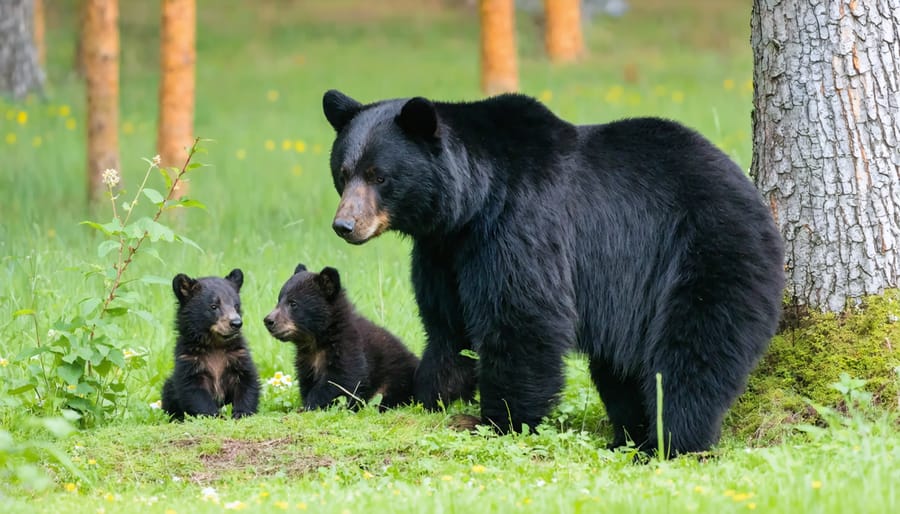
Summer: Growing Up Wild
Summer brings an explosion of life to Ontario’s wilderness, as wildlife families reach their most active and visible period. Young fox kits tumble and play outside their dens, while bear cubs master tree-climbing skills under mama’s watchful eye. Along waterways, you’ll spot Canada geese families paddling in formation, with fuzzy goslings learning to navigate the currents.
Dawn and dusk offer prime viewing opportunities when deer lead their spotted fawns to forest edges for grazing. Keep your distance and bring binoculars – watching a mother deer teach her young to forage is a magical experience you won’t want to miss.
Look skyward to catch glimpses of osprey parents delivering fresh fish to their chicks in massive stick nests. Listen for the constant chatter of young birds begging for food, and watch as patient parents demonstrate essential survival skills.
Remember that summer is a crucial learning period for wildlife families. Give them plenty of space, never feed them, and keep your observations brief. These young animals are building the skills they’ll need for independence, making this season both entertaining and educational for human observers.
Where to Find Wildlife Families
Popular Family Viewing Spots
Ontario’s wilderness offers several prime locations where families can safely observe wildlife in their natural habitat. The Algonquin Park’s Logging Museum Trail provides an easy 1.3km walk with frequent moose sightings, especially during early morning hours. The elevated boardwalk at Mer Bleue Bog near Ottawa offers an excellent vantage point for spotting various bird families and small mammals.
For an accessible viewing experience, the Spruce Bog Boardwalk in Algonquin features well-maintained platforms where families can quietly watch beaver families at work. The Wildlife Research Station’s observation deck is another fantastic spot, particularly during spring when black bear cubs emerge with their mothers.
In the Thousand Islands region, the Jones Creek Trails offer several wildlife viewing platforms where you can spot osprey families fishing and teaching their young. The Presqu’ile Provincial Park’s Owen Point Trail features specially designed blinds for watching shorebirds without disturbing them.
Pro tip: Visit these locations during the “golden hours” – just after sunrise or before sunset – when wildlife is most active. Remember to bring binoculars for each family member, maintain a quiet presence, and stay on marked trails. Many of these spots have interpretive signs that help children learn about the animals they’re observing, making it both an entertaining and educational experience.
Hidden Gems for Wildlife Watching
While everyone flocks to popular spots like Algonquin for moose watching, Ontario’s lesser-known wildlife havens offer equally amazing experiences without the crowds. Take the Minesing Wetlands near Barrie, for instance – this hidden paradise hosts thousands of migratory birds and waterfowl, especially during spring and fall migrations.
The Matchedash Bay Provincial Wildlife Area, just north of Orillia, is another secret spot where lucky visitors might spot osprey diving for fish or beaver families working on their lodges during dawn or dusk. Pack your binoculars and arrive early – the morning chorus of birds here is simply unforgettable.
For those willing to venture a bit further, the Hullett Provincial Wildlife Area near Clinton transforms into a spectacular wildlife nursery in spring. Here, you can observe duck families teaching their ducklings to swim and red-winged blackbirds protecting their nests. Pro tip: bring a spotting scope and set up near the viewing platforms for the best experience.
Don’t overlook urban wilderness areas either. The Leslie Street Spit in Toronto offers surprising encounters with everything from coyote families to nesting bank swallows. Visit on weekday mornings when there’s less foot traffic, and you’ll have a better chance of spotting wildlife going about their daily routines.
Remember to maintain respectful distances and avoid disturbing animal families, especially during breeding seasons. These moments of genuine wildlife observation are precious and worth protecting.
Safe and Respectful Observation Tips
Essential Equipment
To make the most of your wildlife viewing adventures, having the right gear is essential. Start with a reliable pair of binoculars – they’re your window into the fascinating world of Ontario’s wildlife families. We recommend 8×42 or 10×42 magnification for the perfect balance of zoom and stability. Don’t forget to check out these expert tips for family wildlife viewing before heading out.
A good field guide or nature app helps identify different species, while a lightweight spotting scope can bring distant animals into clear view. Pack a weatherproof camera to capture those precious moments, and don’t forget extra batteries! Comfortable, weather-appropriate clothing in earth tones helps you blend in with nature – think layers and quiet fabrics that don’t rustle.
For safety and comfort, bring along:
– A small first-aid kit
– Insect repellent (natural options available)
– Refillable water bottles
– Trail-friendly snacks
– A compact camping chair or sit pad
– Small notebook for wildlife journaling
Pro tip: Keep a pair of backup binoculars in your car – they’re perfect for spontaneous wildlife encounters!
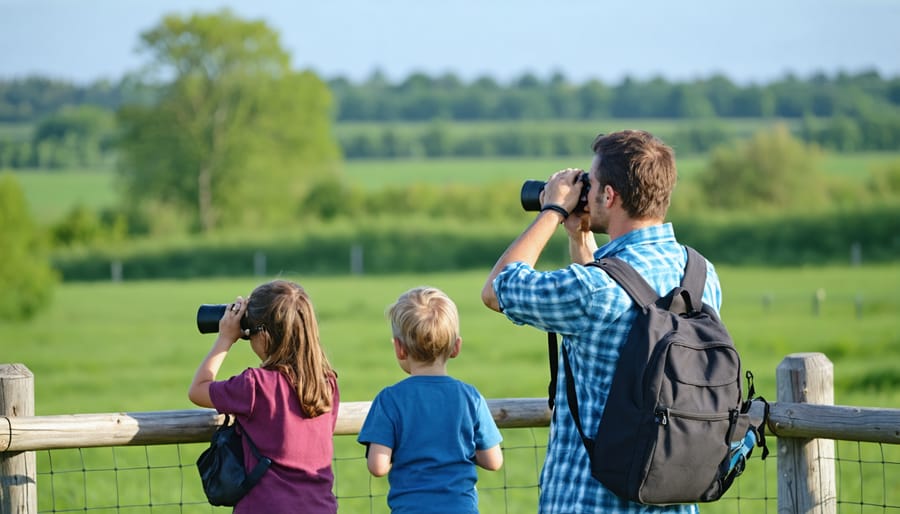
Safety Guidelines
When observing wildlife families in their natural habitat, always prioritize both your safety and the animals’ well-being. Maintain a safe distance of at least 100 meters from large mammals like moose and bears, and 30 meters from smaller animals. This ensures responsible wildlife observation while protecting both you and the creatures you’re watching.
Never feed wild animals or leave food unattended, as this can alter their natural behaviors and create dangerous dependencies. Keep your children close and teach them to speak quietly when watching wildlife. If you spot a mother animal with her young, be extra cautious – maternal instincts can make wildlife particularly defensive.
Always carry a whistle and bear spray in known bear territory, and make noise while hiking to avoid surprising animals. Use binoculars or a zoom lens instead of getting closer for a better view. Remember to stay on marked trails and avoid approaching dens or nests.
If you encounter aggressive behavior, slowly back away while facing the animal. Never run, as this might trigger a chase response. Keep pets leashed at all times to prevent unwanted wildlife interactions.
Making It a Family Experience
Educational Activities
Engaging with wildlife families becomes even more meaningful through hands-on learning experiences. Ontario’s parks offer various educational wildlife activities that bring nature to life for visitors of all ages.
Create a wildlife journal where family members can sketch animals they spot and note interesting behaviors. This helps develop observation skills and creates lasting memories. Try the popular “Animal Detective” game by looking for signs like tracks, feathers, or nests – it’s like a natural treasure hunt!
Join ranger-led programs where you can learn about different animal families through interactive demonstrations. Many parks offer evening programs focusing on nocturnal creatures, complete with owl calling and bat watching activities.
Get creative with nature-inspired art projects using found materials like leaves and pine cones to recreate animal habitats. Photography challenges are another exciting way to document wildlife families while practicing patience and stealth.
Remember to participate in citizen science programs where your wildlife observations contribute to real research. Many parks provide simple apps and guides to help families identify and record animal sightings together.
Photography Tips
Capturing wildlife families in their natural habitat can be a rewarding experience, but it requires patience and the right approach. Start by investing in a zoom lens – this allows you to maintain a safe distance while getting those perfect shots. Early morning and late afternoon offer the best lighting conditions and increased animal activity.
Keep your camera ready but movements minimal. Wildlife families are more likely to appear when you’re quiet and still. Pack extra batteries and memory cards, and consider using burst mode to capture those fleeting family moments, like a mother deer teaching her fawn to forage.
For the best results, choose a spot near natural features like fallen logs or berry bushes where animals frequently visit. A simple blind or natural cover can help you remain undetected. Remember to turn off your flash and camera sounds to avoid startling the animals.
Most importantly, make sure everyone in your family understands that getting the perfect shot isn’t worth disturbing wildlife. Sometimes, the best photographs happen when you simply wait patiently and let nature’s story unfold before your lens.
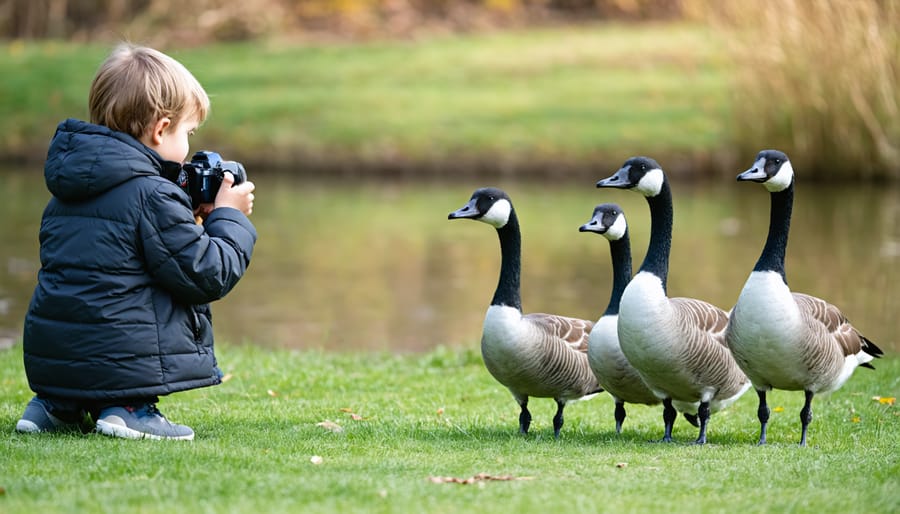
Witnessing wildlife families in their natural habitat is truly one of Ontario’s most magical experiences. As we’ve explored throughout this guide, our province offers countless opportunities to observe these precious moments, from watching bear cubs learning to fish to seeing deer fawns take their first steps.
Remember, responsible wildlife viewing isn’t just about creating memorable experiences for our families – it’s about protecting these animal families too. Keep a safe distance, never feed wildlife, and always follow park guidelines. These simple actions ensure that future generations can continue enjoying these incredible encounters.
The best wildlife experiences often come when we slow down, stay quiet, and remain patient. Pack some binoculars, bring along a wildlife guidebook, and make it an educational adventure for the whole family. Early mornings and dusk typically offer the best viewing opportunities, but every season brings its own unique wildlife families to discover.
Whether you’re visiting Algonquin Park in spring to spot moose calves, heading to Long Point in summer for waterfowl families, or exploring the Bruce Peninsula in fall to see migrating birds, remember to tread lightly and respect nature’s boundaries.
By teaching our children to appreciate and protect wildlife families, we’re nurturing the next generation of environmental stewards. After all, the wonderful wildlife experiences we enjoy today are a precious gift we must preserve for tomorrow’s families to treasure.


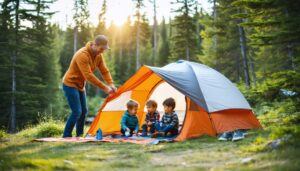







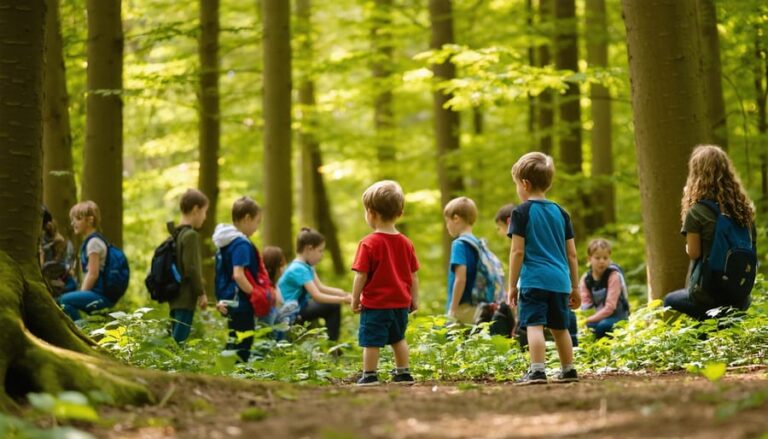



+ There are no comments
Add yours